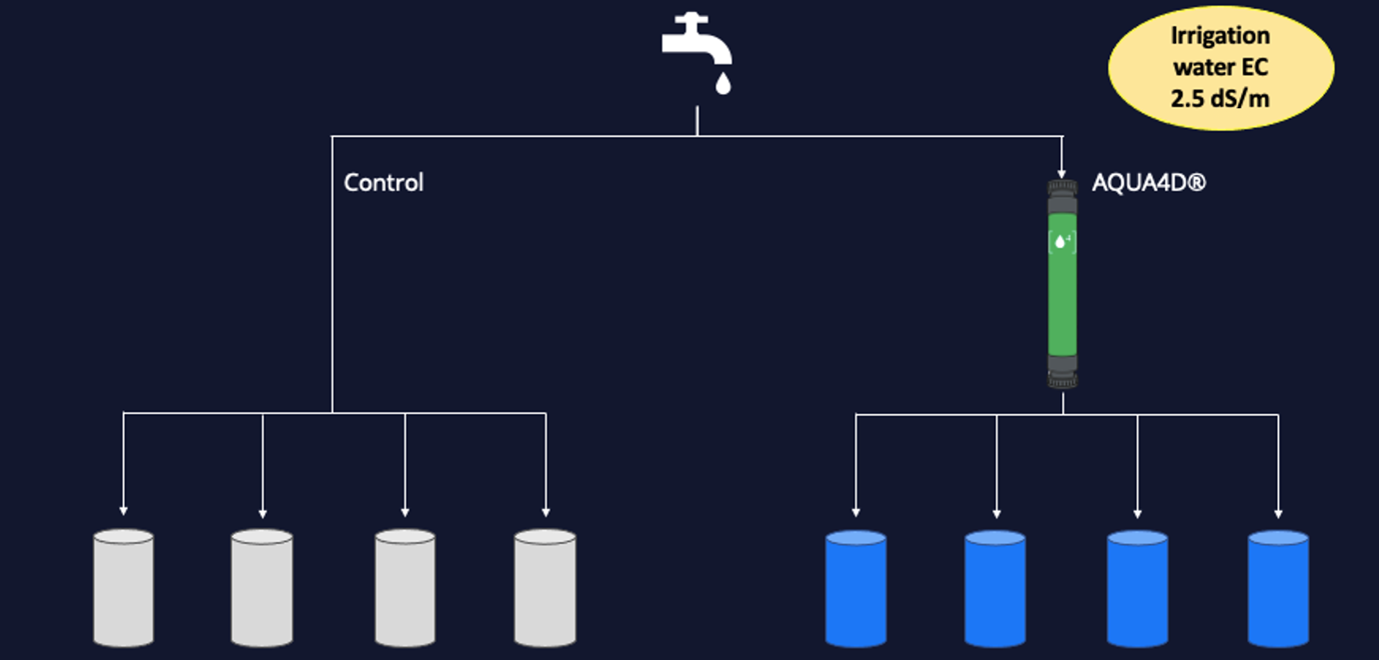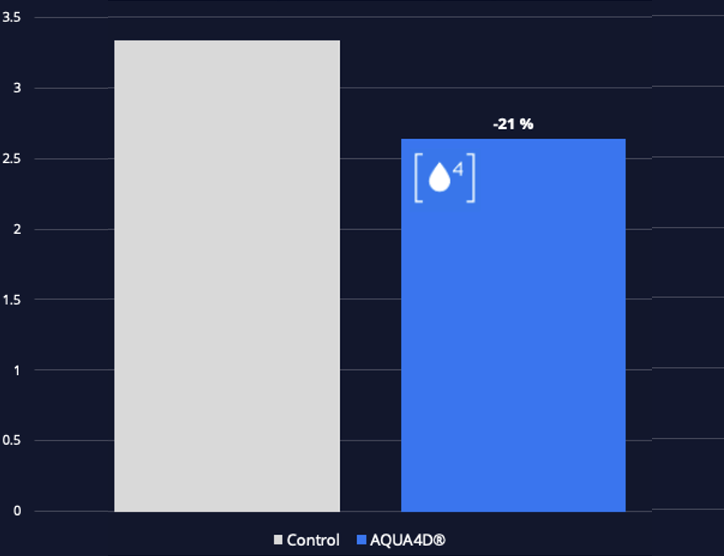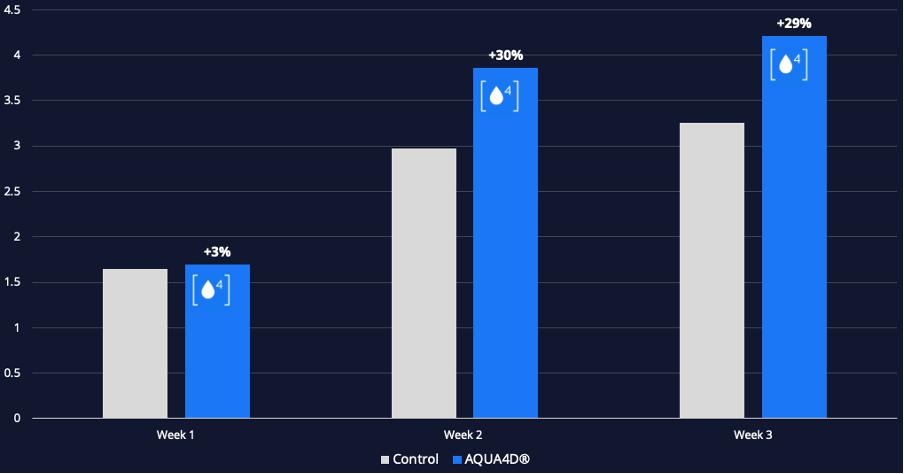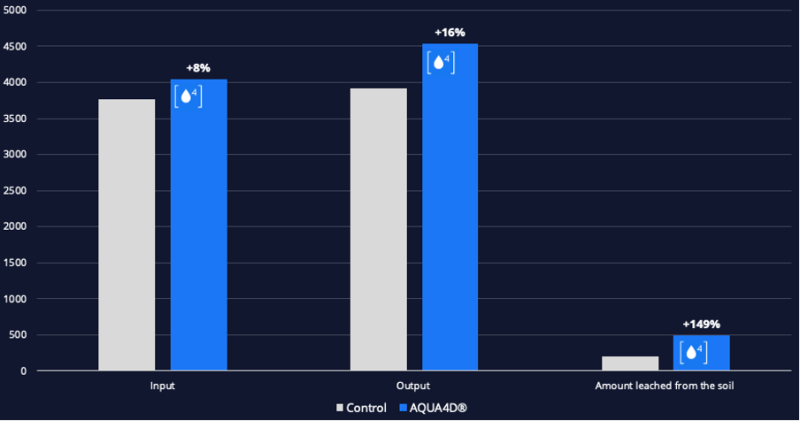A study carried out at California State University, Fresno assessed the ability of AQUA4D® to influence the leaching of salts in soil. The results find strongly in favor of the technology’s ability to treat saline/brackish water, with huge implications for growers in countries with salinity issues.
Experiment set up
The experiment in Fresno, California, involved eight soil columns, suspended vertically to allow for the flow of water. The irrigation water had an electroconductivity (EC) of 2.5 dS/m.
Before beginning the study, water (with no added NaCl) was added to all columns until the soils were qualitatively assessed to be at field capacity. During the experiment, the soil columns were irrigated daily, excluding weekends. The height of water dispensed in each column and the volume of leachate collected was recorded after each irrigation.
Results: Percolation
The experiment demonstrated that columns irrigated with AQUA4D® treated water had a 21% slower mean percolation rate. The AQUA4D® treated soil had a average percolation rate of 2.64 µm/s, whereas the control soil had a higher rate of 3.33 µm/s.
In practice, this is due to the ability of AQUA4D® water to penetrate more deeply into the soil macro- and micropores, as corroborated by a 2020 study at INRGREF agronomy research institute (Tunisia) and INRAE (France).
“It proves what we measure with soil moisture sensors regarding water penetration,” observes AQUA4D’s CTO Charles-Henri Faure. “The slower percolation rate means we improve the ability of water to penetrate into the soil and explains why we observe with sensors and measurements that the soil stays moist for longer.”
“It proves what we measure with soil moisture sensors regarding water penetration,” observes AQUA4D’s CTO Charles-Henri Faure. “The slower percolation rate means we improve the ability of water to penetrate into the soil and explains why we observe with sensors and measurements that the soil stays moist for longer.”
Results: Drainage water
Although the volume of drainage water was lower in AQUA4D® treated columns, the EC of drainage water was much higher with AQUA4D®. Overall, AQUA4D® water treatment led to a 30% higher EC than the control for the final two weeks of the experiment, illustrating that more dissolved minerals and NaCl were present in the drainage water.
These results clearly demonstrate the leaching effect of AQUA4D® which has been observed in saline conditions across the world.
Charles-Henri Faure offers an explanation for the effects observed: “With AQUA4D®, minerals remain in dissolved form, and it’s also why in parallel we observe better uptake of fertilizers (NPK) from plants and a better lixiviation effect when necessary, and avoid salts remaining in the root zone where they can damage plants.”
Graph 2: EC of drainage water per week [mS/cm] :
Results: Crude salt balance: 493 mg VS 198 mg
Looking more deeply into this aspect, the Fresno scientists examined the crude salt balance by calculating the net change in the amount of salt in the soil column – the total amount of salt (input) compared with the amount of salt detected in the leachate (output). For the AQUAD4® treated water, the output was 4537 mg of salt, and the input was 4044 mg, which implied that 493 mg of salt was leached from the soil. In the case of the untreated water, the output was 3914 mg of salt, and the input was 3761 mg, which meant that that 198 mg of salt was leached from the control soil.
Graph 3: Crude salt balance [mg] :
Furthermore, when the amount of salt in the leachate was divided by the volume of water applied, the amount of salt leached per ml of water applied were respectively 0.195 and 0.084 mg/ml for the AQUA4D® treated and untreated soil columns. Hence, it can be inferred that the AQUA4D® treated water can potentially leach 2.31 times more ions per ml of water than the control.
Conclusion and implications
The report demonstrated that AQUA4D® was able to increase the leaching of salts in soil. In the experiement, this is evidenced by the fact that the EC of drain water was significantly higher in the AQUA4D® treated soil columns, and that overall AQUA4D® drained 1.3x more salts than the control.
In practice, the implications are huge for the many agricultural areas plagued by soil salinity and high-EC water. “This experiment corroborates various previous studies, and confirms field observations from over 10 years,” says CTO Charles-Henri Faure. “It is a scientific proof of what our customers have observed after having installed an AQUA4D® system, and the knock-on benefits they have seen in their crops.”
—-
Find out more about our scientific collaborations here: https://www.aqua4d.com/collaborations/
Read the full report here:
Based on study by Tim Jacobsen and Charles F. Cochran et al.
California
Precision Irrigation
Salinity
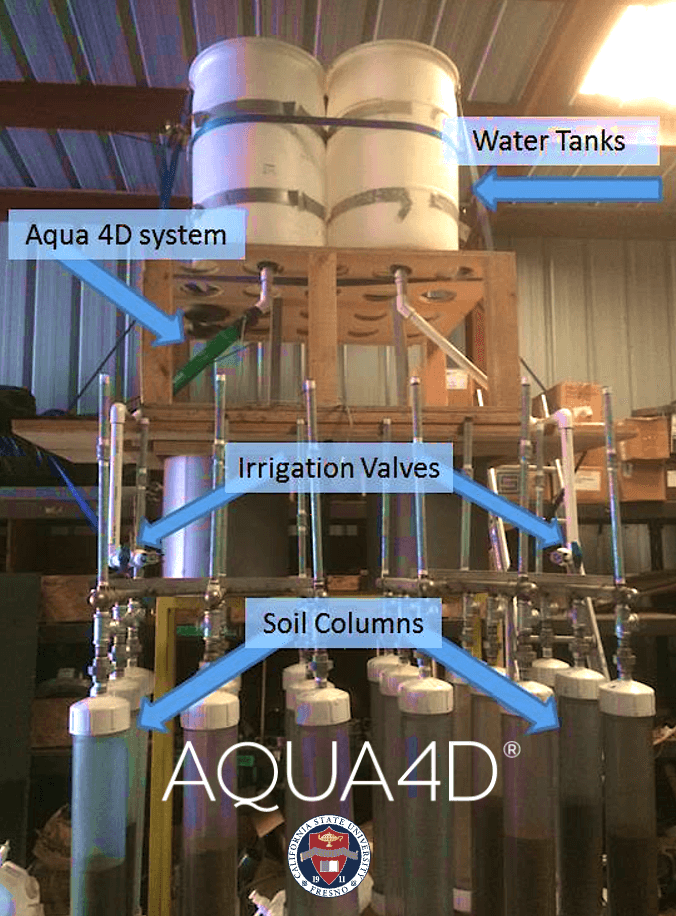
“This study is scientific proof of what our customers have observed after having installed an AQUA4D® system, and the knock-on benefits they have seen in their crops.” – Charles-Henri Faure, CTO, AQUA4D
Animation: AQUA4D’s action on salts



